Abstract
Monoclonal antibodies were raised against the surface of epimastigotes and metacylic trypomastigotes of Trypanosoma cruzi, as shown by electron microscopy, agglutination, and immunofluorescence. The antibodies were stage specific but not strain specific. A deleterious effect of the antibodies on T. cruzi culture forms was shown by the drastic reduction of parasite motility and incorporation of nucleic acid precursors. Some fraction of the parasite population, however, was viable and replicated and infected mouse macrophages in culture. The antibodies were found to also mediate complement-induced lysis of culture forms of T. cruzi.
Full text
PDF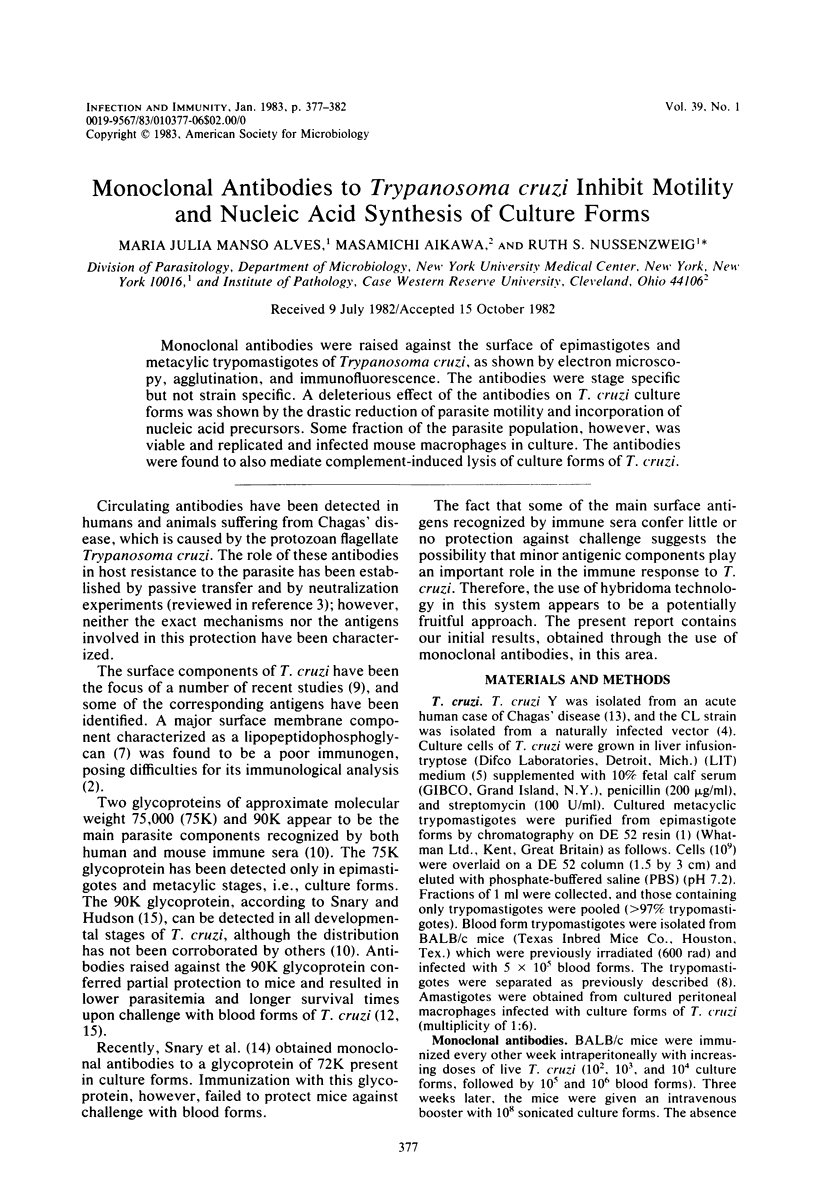
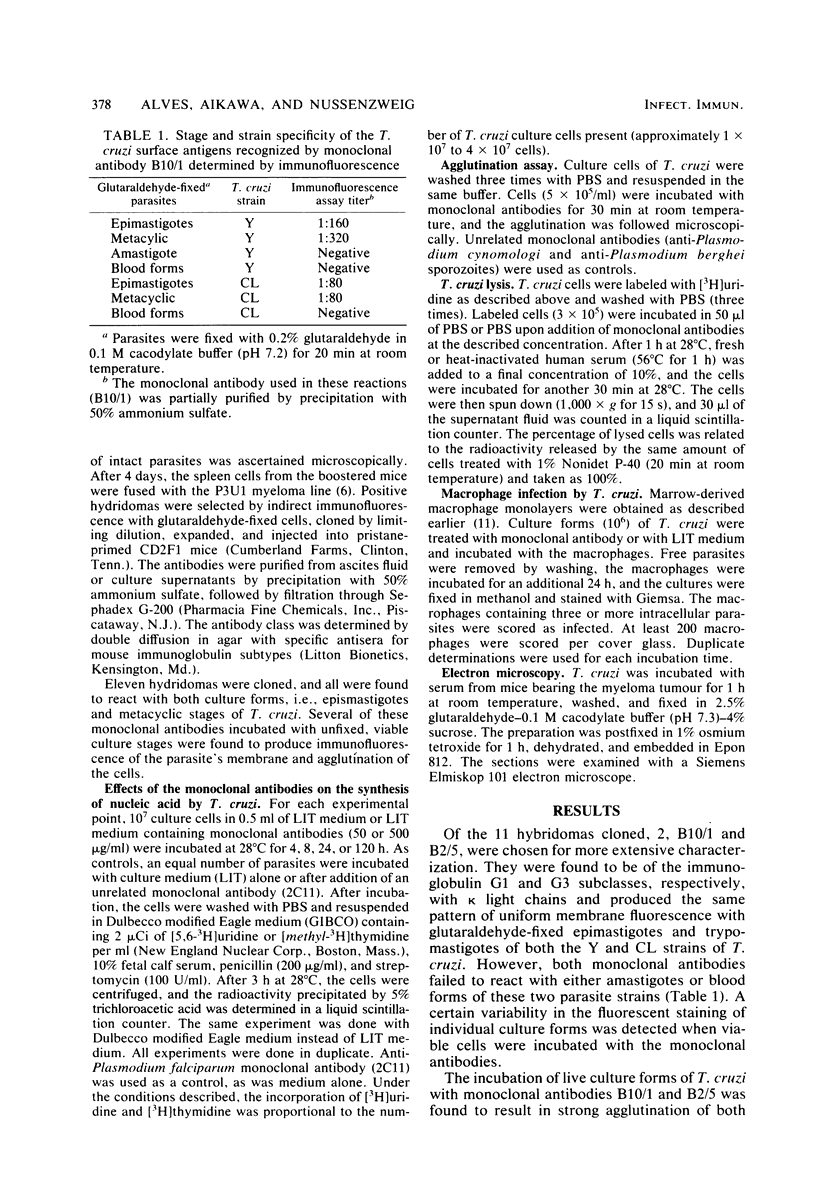
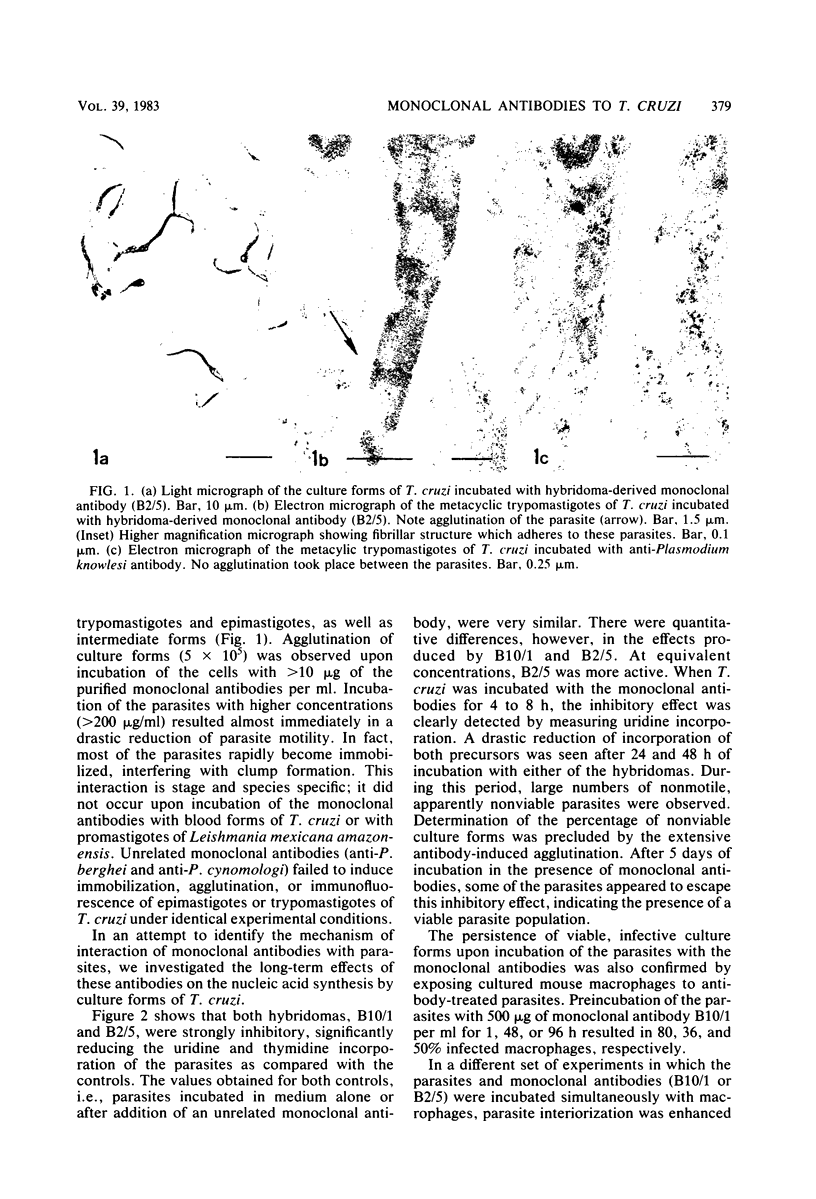
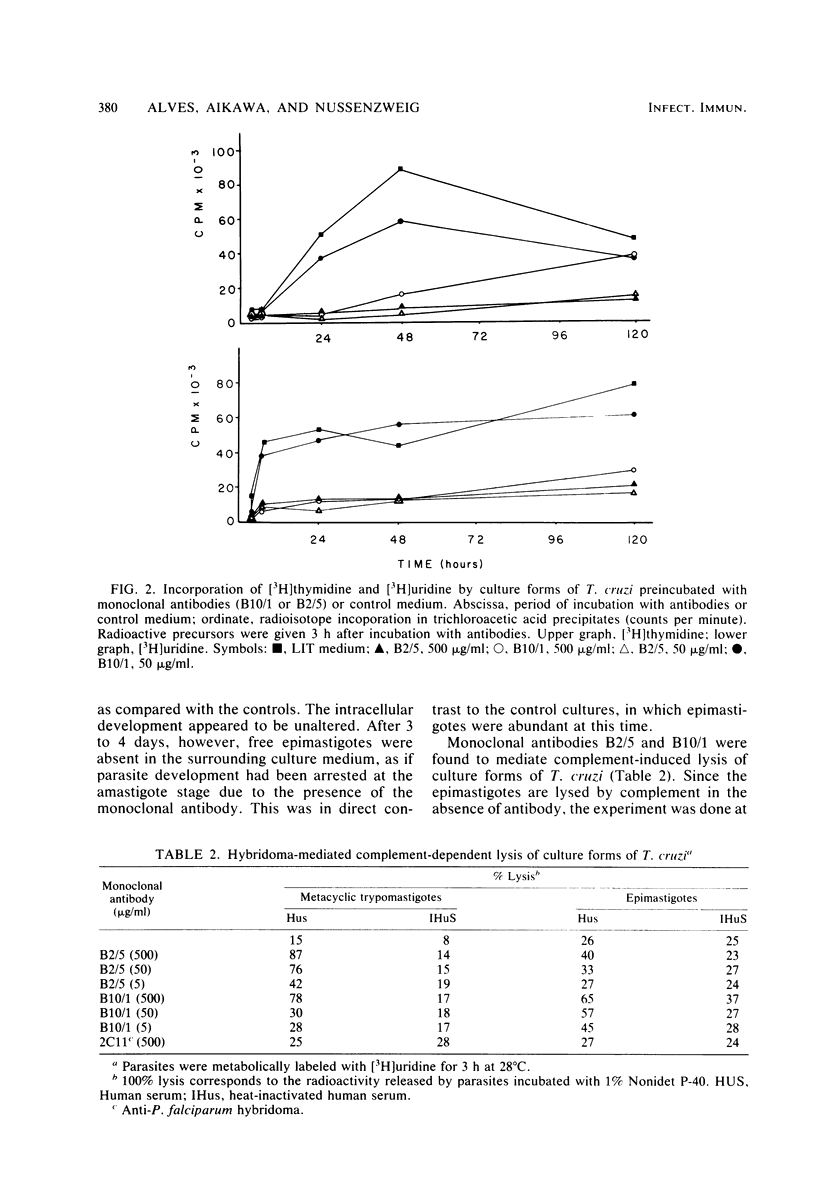
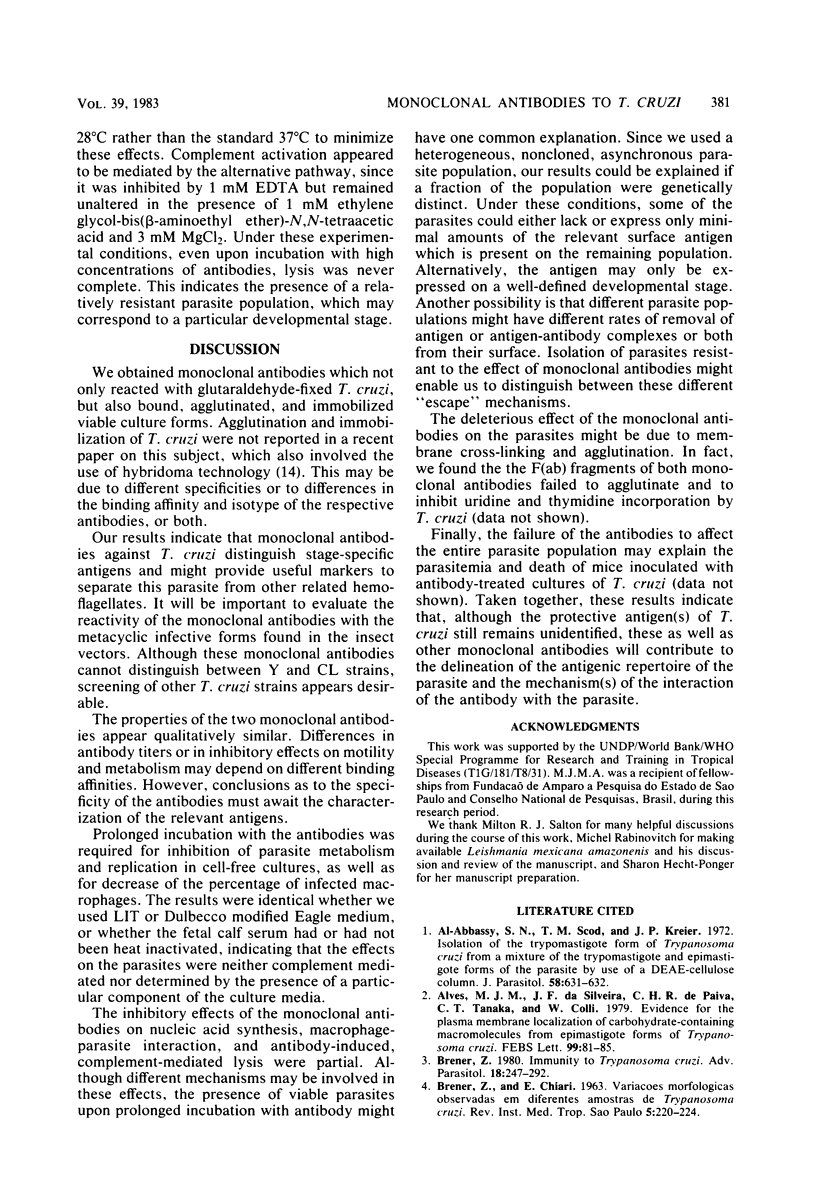
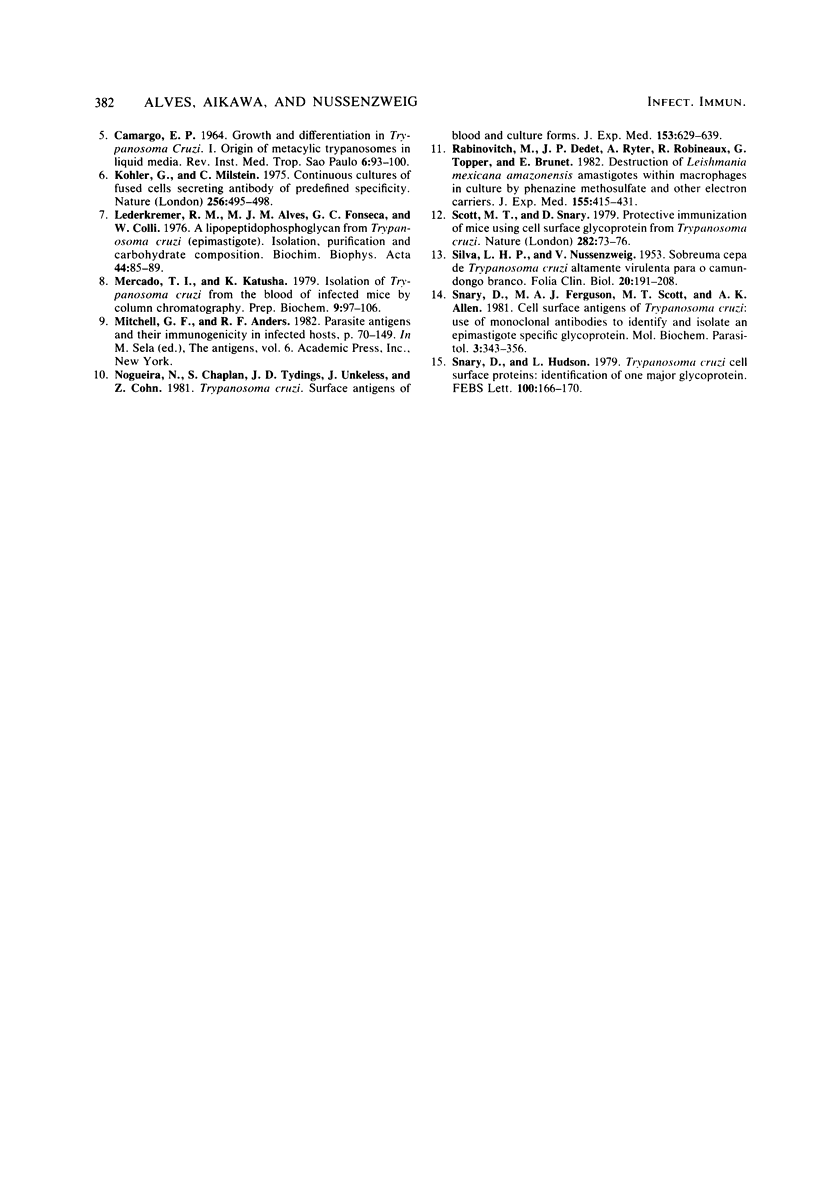
Images in this article
Selected References
These references are in PubMed. This may not be the complete list of references from this article.
- Alves M. J., Da Silveira J. F., De Paiva C. H., Tanaka C. T., Colli W. Evidence for the plasma membrane localization of carbohydrate-containing macromolecules from epimastigote forms of Trypanosoma cruzi. FEBS Lett. 1979 Mar 1;99(1):81–85. doi: 10.1016/0014-5793(79)80254-9. [DOI] [PubMed] [Google Scholar]
- BRENER Z., CHIARI E. VARIA C OES MORFOL'OGICAS OBSERVADAS EM DIFERENTES AMOSTRAS DE TRYPANOSOMA CRUZI. Rev Inst Med Trop Sao Paulo. 1963 Sep-Oct;5:220–224. [PubMed] [Google Scholar]
- Brener Z. Immunity to Trypanosoma cruzi. Adv Parasitol. 1980;18:247–292. doi: 10.1016/s0065-308x(08)60401-7. [DOI] [PubMed] [Google Scholar]
- CAMARGO E. P. GROWTH AND DIFFERENTIATION IN TRYPANOSOMA CRUZI. I. ORIGIN OF METACYCLIC TRYPANOSOMES IN LIQUID MEDIA. Rev Inst Med Trop Sao Paulo. 1964 May-Jun;6:93–100. [PubMed] [Google Scholar]
- De Lederkremer R. M., Alves M. J., Fonseca G. C., Colli W. A lipopeptidophosphoglycan from Trypanosoma cruzi (epimastigota). Isolation, purification and carbohydrate composition. Biochim Biophys Acta. 1976 Aug 24;444(1):85–96. doi: 10.1016/0304-4165(76)90226-9. [DOI] [PubMed] [Google Scholar]
- Köhler G., Milstein C. Continuous cultures of fused cells secreting antibody of predefined specificity. Nature. 1975 Aug 7;256(5517):495–497. doi: 10.1038/256495a0. [DOI] [PubMed] [Google Scholar]
- Mercado T. I., Katusha K. Isolation of Trypanosoma cruzi from the blood of infected mice by column chromatography. Prep Biochem. 1979;9(1):97–106. doi: 10.1080/00327487908061675. [DOI] [PubMed] [Google Scholar]
- Nogueira N., Chaplan S., Tydings J. D., Unkeless J., Cohn Z. Trypanosoma cruzi. Surface antigens of blood and culture forms. J Exp Med. 1981 Mar 1;153(3):629–639. doi: 10.1084/jem.153.3.629. [DOI] [PMC free article] [PubMed] [Google Scholar]
- Rabinovitch M., Dedet J. P., Ryter A., Robineaux R., Topper G., Brunet E. Destruction of Leishmania mexicana amazonensis amastigotes within macrophages in culture by phenazine methosulfate and other electron carriers. J Exp Med. 1982 Feb 1;155(2):415–431. doi: 10.1084/jem.155.2.415. [DOI] [PMC free article] [PubMed] [Google Scholar]
- Scott M. T., Snary D. Protective immunisation of mice using cell surface glycoprotein from Trypanosoma cruzi. Nature. 1979 Nov 1;282(5734):73–74. doi: 10.1038/282073a0. [DOI] [PubMed] [Google Scholar]
- Snary D., Ferguson M. A., Scott M. T., Allen A. K. Cell surface antigens of Trypanosoma cruzi: use of monoclonal antibodies to identify and isolate an epimastigote specific glycoprotein. Mol Biochem Parasitol. 1981 Oct;3(6):343–356. doi: 10.1016/0166-6851(81)90035-9. [DOI] [PubMed] [Google Scholar]
- Snary D., Hudson L. Trypanosoma cruzi cell surface proteins: identification of one major glycoprotein. FEBS Lett. 1979 Apr 1;100(1):166–170. doi: 10.1016/0014-5793(79)81156-4. [DOI] [PubMed] [Google Scholar]
- al-Abbassy S. N., Seed T. M., Kreier J. P. Isolation of the trypomastigote form of Trypanosoma cruzi from a mixture of the trypomastigote and epimastigote forms of the parasite by use of a DEAE-cellulose column. J Parasitol. 1972 Jun;58(3):631–632. [PubMed] [Google Scholar]



